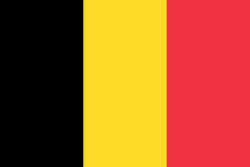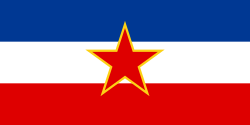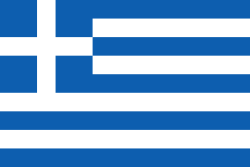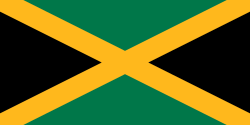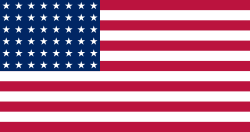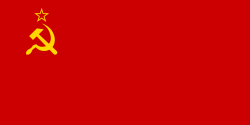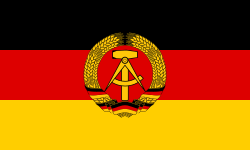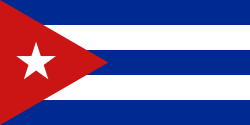Höjdhopp för herrar i friidrott vid olympiska sommarspelen 1984
| Herrarnas höjdhopp vid de XXIII:e olympiska sommarspelen | ||||
| Anläggning | Los Angeles Memorial Coliseum | |||
|---|---|---|---|---|
| Datum | 10-11 augusti | |||
| Deltagare | 30 från 20 nationer | |||
| Vinnarhöjd | 2,35 | |||
| Medaljörer | ||||
| ||||
| ||||
| ||||
| ← Moskva 1980 Seoul 1988 → | ||||
| Friidrott vid olympiska sommarspelen 1984 | ||||
| ||||
|---|---|---|---|---|
| ||||
| ||||
| ||||
| ||||
| ||||
| ||||
| ||||
Höjdhopp för herrar vid olympiska sommarspelen 1984 i Los Angeles avgjordes 11 augusti.
Medaljörer
| Gren | Guld | Silver | Brons | |||
| Höjdhopp | Dietmar Mögenburg | 2,35 m | Patrik Sjöberg | 2,33 m | Jianhua Zhu | 2,31 m |
Resultat
Kval
- Hölls den 10 augusti 1984
| Placering | Grupp A | Höjd |
|---|---|---|
| 1. | 2.24 m | |
| 7. | 2.24 m | |
| 8. | 2.24 m | |
| 9. | 2.24 m | |
| 10. | 2.24 m | |
| 11. | 2.21 m | |
| 13. | 2.18 m | |
| 14. | 2.15 m | |
| Placering | Grupp B | Höjd |
|---|---|---|
| 1. | 2.24 m | |
| 3. | 2.21 m | |
| 5. | 2.21 m | |
| 6. | 2.18 m | |
| 7. | 2.18 m | |
| 8. | 2.18 m | |
| 9. | 2.15 m | |
| 11. | 2.15 m | |
| 12. | 2.10 m | |
| 14. | 2.05 m (NR) | |
| — | NM |
Final
- Hölls den 11 augusti 1984
| Placering | Final | Höjd |
|---|---|---|
| 2.35 m | ||
| 2.33 m | ||
| 2.31 m | ||
| 4. | 2.31 m | |
| 5. | 2.29 m | |
| 6. | 2.29 m | |
| 7. | 2.29 m | |
| 8. | 2.27 m | |
| 9. | 2.24 m | |
| 10. | 2.15 m | |
| — | NM | |
Referenser
| ||||||||
| |||||||||||||
Media som används på denna webbplats
An icon that represents a gold medal
An icon that represents a silver medal
An icon that represents a bronze medal
Kanadas flagga, införd 1965; denna version med Pantone‐nyanser. Nuvarande utformning ersatte den tidigare kanadensiska Red Ensign.
Variant version of a flag of Japan, used between January 27, 1870 and August 13, 1999 (aspect ratio 7:10).
Variant version of a flag of Japan, used between January 27, 1870 and August 13, 1999 (aspect ratio 7:10).
The civil ensign and flag of Belgium. It is identical to Image:Flag of Belgium.svg except that it has a 2:3 ratio, instead of 13:15.
Flag of the Socialist Federal Republic of Yugoslavia (1946-1992).
The design (blazon) is defined in Article 4 of the Constitution for the Republic of Yugoslavia (1946). [1]
Flag of Jamaica. “The sunshine, the land is green, and the people are strong and bold” is the symbolism of the colours of the flag. GOLD represents the natural wealth and beauty of sunlight; GREEN represents hope and agricultural resources; BLACK represents the strength and creativity of the people. The original symbolism, however, was "Hardships there are, but the land is green, and the sun shineth", where BLACK represented the hardships being faced.
Chinese Taipei Olympic Flag. According to the official website of Chinese Taipei Olympic Committee, Blue Sky(circle) & White Sun(triangles) above the Olympic rings is neither the National Emblem of the Republic of China, nor the Party Emblem of Kuomintang (KMT), but a design in between, where the triangles do not extend to the edge of the blue circle, as registered at International Olympic Committee in 1981 and digitally rendered in 2013. Besides, the blue outline of the five-petaled plum blossom is broader than the red one. Moreover, the CMYK code of the blue one and the Blue Sky & White Sun is "C100-M100-Y0-K0", and different from the Olympic rings (C100-M25-Y0-K0). Note that it's the only version recognized by IOC.
US Flag with 44 stars. In use 4 July 1891–3 July 1896. Created by jacobolus using Adobe Illustrator, and released into the public domain.
US Flag with 44 stars. In use 4 July 1891–3 July 1896. Created by jacobolus using Adobe Illustrator, and released into the public domain.
US Flag with 45 stars. In use 4 July 1896–3 July 1908. Created by jacobolus using Adobe Illustrator, and released into the public domain. This flag was used during the Spanish-American War.
US Flag with 45 stars. In use 4 July 1896–3 July 1908. Created by jacobolus using Adobe Illustrator, and released into the public domain. This flag was used during the Spanish-American War.
US Flag with 46 stars. In use 4 July 1908–3 July 1912. Created by jacobolus using Adobe Illustrator, and released into the public domain.
Other version: Image:US 46 Star Flag.svgUS Flag with 46 stars. In use 4 July 1908–3 July 1912. Created by jacobolus using Adobe Illustrator, and released into the public domain.
Other version: Image:US 46 Star Flag.svgUS Flag with 48 stars. In use for 47 years from July 4, 1912, to July 3, 1959.
The Canadian Red Ensign used between 1921 and 1957.
This image has compared for accuracy (mainly colors) using an image from World Statesmen. The only change is making the maple leaves green from red. This image has compared for accuracy (mainly colors) using an image from World Statesmen. The most recent version of this image has changed the harp into one with a female figure; see [http://flagspot.net/flags/ca-1921.html FOTW
The Canadian Red Ensign used between 1921 and 1957.
This image has compared for accuracy (mainly colors) using an image from World Statesmen. The only change is making the maple leaves green from red. This image has compared for accuracy (mainly colors) using an image from World Statesmen. The most recent version of this image has changed the harp into one with a female figure; see [http://flagspot.net/flags/ca-1921.html FOTW
Flag of Zambia before 1996
Flag of the Socialist Federal Republic of Yugoslavia (1946-1992).
The design (blazon) is defined in Article 4 of the Constitution for the Republic of Yugoslavia (1946). [1]
1910 Flag of Bermuda (with smaller coat of arms)








